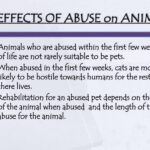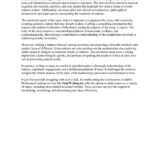Why is animal cruelty a social, ethical, and legal crisis? At first glance, it may seem like a straightforward question, but the implications of this issue are profound and multi-faceted. The treatment of animals in our society reveals deep-seated values about compassion, justice, and social responsibility. This crisis calls for a critical examination of how we, as a society, define and enforce our moral and legal obligations towards non-human creatures.
First, let us consider the social dimensions of animal cruelty. In many societies, animals are viewed not only as companions but also as integral parts of the ecosystem. Yet, the prevalence of animal cruelty reveals a significant dissonance between public sentiment and actionable change. Awareness campaigns highlighting the plight of abused animals often elicit emotional responses, yet statistics point to a staggering reality: cases of cruelty persist and, in some instances, escalate.
One must ponder: how does our societal indifference contribute to this ongoing crisis? The answer lies in a complex interplay of cultural norms and economic factors. In cultures where animal exploitation is deeply ingrained—be it for entertainment, fashion, or food—ethical concerns are often overshadowed by tradition and profit. This cultural inertia poses a formidable challenge. How can we shift the paradigm to prioritize kindness over commercial interests?
Furthermore, the ethical considerations surrounding animal rights create a moral quandary. Do we consider animals to possess innate rights that should be protected by law? Or do we maintain a hierarchical view, placing human needs above those of animals? The philosophical discourse surrounding these questions reveals significant divisions within society. Advocates for animal rights argue that sentient beings deserve protection from suffering, while oppositional viewpoints tend to prioritize economic gain and human benefit.
The rising awareness of animal sentience further complicates this ethical landscape. Scientific research continues to unveil the cognitive and emotional capacities of various species, illustrating that animals experience pain, joy, and fear in ways similar to humans. The challenge emerges: how can we reconcile this knowledge with societal practices that inflict harm upon animals? As our understanding of animal consciousness evolves, so too must our ethical frameworks.
Legal responses to animal cruelty have similarly lagged behind public sentiment. While many jurisdictions have established laws aimed at preventing cruelty, enforcement remains inconsistent. Often, penalties for animal abuse are nominal and fail to reflect the gravity of the crime, raising questions of justice and accountability. What complicates this further is the disparate legal protections afforded to different species. Domestic pets may receive more legal protections than farm animals, which are often subjected to egregious conditions without recourse for relief. This inconsistency begs the question: are we truly valuing all lives equally?
In the realm of legislation, the complexity is exacerbated by varying definitions of cruelty and sufficient evidence requirements. For many individuals, witnessing an act of cruelty may not qualify for legal intervention, often leaving victims without protection. This inadequacy represents a serious flaw in our legal system. How do we create laws that are both inclusive and robust enough to encompass the vast spectrum of species affected by cruelty? Comprehensive legislation must reflect the ethical principles that prioritize animal welfare over socio-economic interests.
Furthermore, animal cruelty intersects with broader social issues, such as poverty, mental health, and systemic inequalities. Studies suggest a correlation between societal violence and animal abuse, compelling advocates to argue for a comprehensive approach to violence prevention. This intersectionality highlights the urgent need to address animal cruelty as a facet of public health and social policy. It raises the question: how can we leverage animal advocacy to foster broader societal change?
Moreover, the role of education cannot be understated. Instilling empathy and understanding for animals in younger generations can create a ripple effect that challenges ingrained beliefs over time. Educational programs focusing on kindness towards animals, responsible pet ownership, and respect for all living creatures can cultivate a society that values compassionate treatment towards non-human life. Can such initiatives pave the way for a more humane future?
Engaging the public in dialogue about animal cruelty also presents a crucial aspect of resolving this crisis. Effective advocacy requires collaboration across communities, emphasizing shared values of compassion and justice. Social media, for instance, has emerged as a powerful tool to raise awareness and mobilize support. The challenge remains: how can we harness this digital landscape to foster meaningful change and inspire collective action against cruelty?
In conclusion, the crisis of animal cruelty is a multifaceted issue that encompasses social, ethical, and legal domains. The interplay of cultural values, economic factors, philosophical discourse, and legal inadequacies creates a complex web of challenges. To address this endemic crisis, we must advocate for comprehensive legal protections, shift societal norms, and foster empathetic education. How can we, as a society, rise to the occasion and reshape our relationship with the animals that share our world? The answer lies in our collective commitment to justice and compassion, ensuring that their voices are heard and valued in the tapestry of our ethical landscape.







